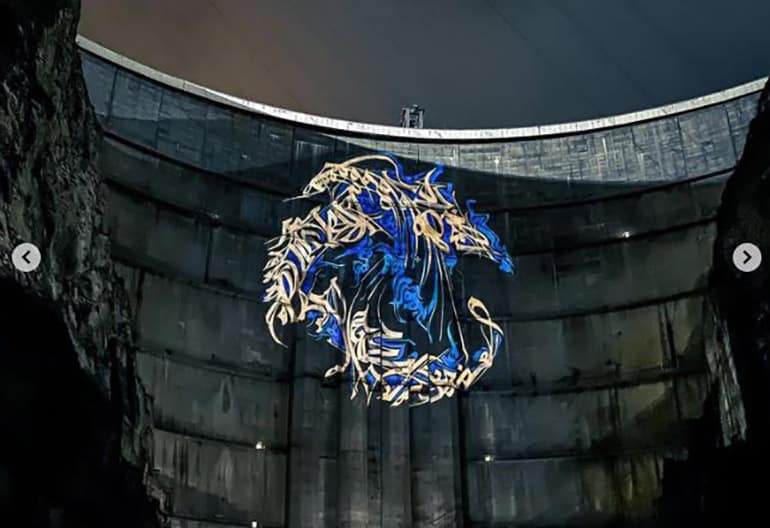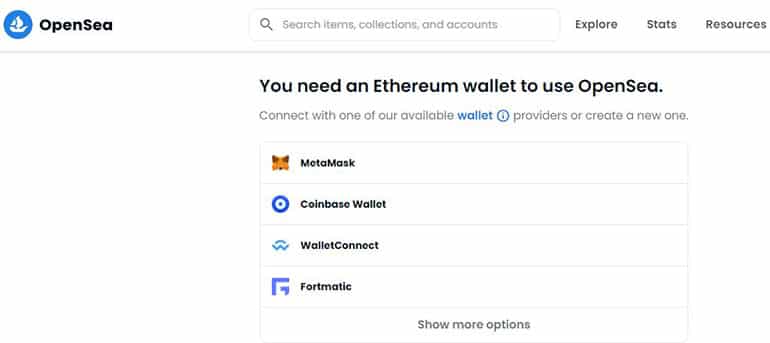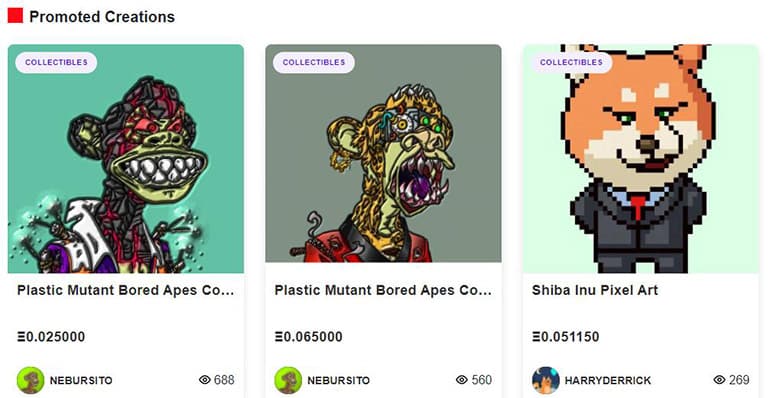NFT and Crypto-Art: How to Make a Picture into a Token and Sell It?
Irreplaceable NFT tokens are a brand new, technological way to simply and easily make money from your art. NFTs have revolutionized the fine art market and interest in them persists, with more and more artists coming to blockchain to sell their paintings. We tell you how to do it.
Contents
What is NFT?
Regular tokens are a kind of securities in digital virtual reality. They can be exchanged with each other. NFT (non-fungible token) are tokens that cannot be exchanged, they are called non-fungible or non-swappable. On a special technological blockchain platform, any digitized visual artifact can be turned into an NFT token, tokenized and sold. Each NFT token is unique; practically, it acts as a digital certificate that certifies the artist’s ownership of the painting. By selling a digital painting, the artist retains the rights to it and at the same time is able to profit from it by reselling it or receiving royalties.

Image. 1
Blockchain has such properties that information about the creator of a visual artifact, his copyright to own a painting or photograph, transactions with an NFT token cannot be erased or changed. And despite the fact that once sold, the NFT is available for download to anyone who wants it, the right to the digital work of art always remains with the artist.
Top 5 Best NFT Marketplaces
This is especially important for artists who are engaged in digital art, that is, creating paintings in graphic editors, not publishing them in tangible media. There was no real protection against downloading digital paintings from the Internet, it was impossible to make money from them, and therefore the attitude to such art was not serious. Blockchain and the NFT have not completely corrected the situation, but they have greatly increased the level of protection for the rights of digital artists.
The blockchain’s breakthrough value also lies in the fact that the token protects the rights of all digital creators and creates a level playing field for them, formally – without privileges for celebrities (in practice, of course, promoted creators have the advantage). Art is a highly competitive environment, the most difficult thing is to get the opportunity to show your creations to the public and at the same time get the opportunity to sell them. Of course, a well-known artist on a blockchain platform will sell a painting for a million dollars (Fig. 1) much more expensive than a novice, but on this platform they are equal and if a user-buyer likes the NFT-art of a novice author more, he will buy it. It is possible that the beginner will get into the top places NFT ratings.

Image. 2
For further development of an artist’s career, blockchain also provides more opportunities than traditional forms of promotion. In the usual case, an artist has to look for an opportunity to present his NFT paintings somewhere, either independently or through an agent, seek help from gallerists, and so on. Somehow he has to get in the field of view of influential professionals. Digital artists don’t have such opportunities either.
Blockchain has brought about a real revolution in this respect – every digital artist now has a place where he can present his NFT art, set the price as he sees fit, and be sure that the fate of his paintings is decided directly by the viewer. If the audience likes it, they buy the paintings. The demand shows how much the public likes the paintings, and if they like them, the artist receives not only praise for it, like Pokras Lampas, the first Russian NFT artist (Fig. 1), but also real money.
In this case, from the very beginning the author can sell his paintings in the form of NFT not only in the domestic market, but also in foreign markets. Blockchain platforms have a very large paying audience, so any artist can count on success and earnings from the first picture posted in the form of an NFT. When an author’s work begins to sell more and more actively, the price of a painting or other work grows, and other works of the author begin to be valued more highly. Therefore, visual artifacts in the blockchain economy become a valuable investment asset. The author always retains the rights.
The demand for visual content starts to grow when it is perceived as an investment asset by ordinary users who may not be very interested in the artistic value of a project. Blockchain can also be useful for artists who are not interested in succeeding in the digital space. They can still sell their paintings as NFT-pictures, get money, and thus have more opportunities to keep making art and promoting their creations in the real world.
The complexities of the NFT
NFT tokens, as a way of presenting and selling visual content, have few disadvantages, but there are some. One of them is the unclear legal status of NFT-tokens. So far, cryptocurrencies and tokens in general are regulated differently in different countries, and an asset like NFT is not regulated at all. The authorities are trying to regulate the field of blockchain, in this context, artists may have problems if the digital painting NFT sell in other countries, also it is necessary to clarify the possibility of withdrawal of money after the sale and the features of taxation in the country where the user receives money for the paintings and in the country where the withdrawal.
Another difficulty is that in order to upload digital pictures in the form on the platform, you will need to make some investments – quite significant for the average user, if the platform runs on blockchain Ethereumless if the platform is on Binance Smart Chain. These funds are needed to pay for transactions.
A lesser problem is the technical complexity of blockchain for those who have never come into contact with the technology. But right now, most platforms that present opportunities to sell tokens try to offer the simplest possible functionality to creators, and it won’t take too much effort to learn the capabilities of NTF exchanges. In addition, there is no shortage of instructions on the platforms, all of which make it possible to learn how to download and sell tokens.
What and how are they sold as NFTs?
Selling works of authorship in the form of NFT tokens is a good way to make money. Almost any digital file can be tokenized. If it is a physical object, for example, a painting, then it must first be digitized, for example, photographed, visualized using 2D or 3D programs, or scanned. As practice shows, for sale it is best to digitize a physical product with 2D or 3D graphics. If we are talking about digital art, you can tokenize anything – photography, graphic design, digital 2D-graphics, 3D-graphics.
To prepare visual content for sale, you need to decide at what price to sell the NFT token, on which platform to sell, and how much to invest in the token sales project. Pricing artwork is always subjective. An author who has invested inspiration, time, and labor into a painting or other visual object and is preparing to invest in a blockchain platform, of course, feels that his painting is very expensive.
On the NFT exchanges there are no tools for the evaluation of works of art, there is no common practice or any standards. Therefore, the question of valuation of paintings has to be solved independently, but initially guided by the prices that are presented for similar content on a particular platform. On one of the most popular NFT platforms, Binance, it is believed that the content to be sold should be evaluated according to such conditional parameters as rarity, usefulness, tangibility, and time of possession.
- Rarity – A single token is valued more than a series. An author’s asset that is already recognized is more sought-after and considered rarer than a novice author’s token.
- Usefulness – tokens by a novice author, if they are created just for beauty, initially have little utility, but as demand grows, they gain value, at least as an investment asset.
- Significance – The digital picture of a novice author is evaluated as having little value, but later, when the artist can become famous, the value of the pictures will grow, and they may even have a collectible value and they can be sold at a much higher price.
Also, it is desirable to take into account the costs that were invested in creating the picture and in uploading it to the NFT platform.
Marketplaces
The platforms for selling NFT tokens are marketplaces, where the author usually has to register. The author uploads their digital works, here they are turned into tokens, the author describes them and either submits them immediately for sale, or they are sent for moderation and if they meet the rules, they are uploaded for sale. You can either sell one token at a time or a series of tokens, at a fixed cost, sometimes at a cost suggested by the buyer or at a cost from an auction. There are many NTF platforms already, but a few are popular, among them are:
- OpenSea NFT (https://opensea.io/).
- Binance NFT (https://www.binance.com/en/nft/home).
- SuperRare (https://superrare.com/).
- Rarible (https://rarible.com/).
- Mintable (https://mintable.app).
- Gate.io NFT (https://www.gate.io/en/nft).
- JuggerWorld (https://jgnnft.com/).
- TreasureLand (https://treasureland.market/).
- Bakery Swap and others.
OpenSea – a decentralized NTF service on the Ethereum blockchain. Before you can use the platform, you need to connect to a wallet (Figure 3), after which you can execute a token. Trade transactions are executed by a smart contract. Paintings are sold at a fixed price and by auction.
Image. 3
Binance NFT – Marketplace on the blockchain Binance Smart Chain, respectively, you need to have a cryptocurrency in your account BNB. To sell content, you need to register and be verified – the marketplace is centralized. NFTs are sold at a fixed price, a buyer’s offer or an auction price. Binance also offers a decentralized Featured NFT app.
SuperRare – marketplace for high-level visual content, so tokens here are more expensive than on most platforms, in addition, the site operates on the Ethereum blockchain. Also, the tokens sold cannot be sold anywhere else, according to the rules of the marketplace.
Rarible – a platform where the author can demonstrate his content in part, even before the sale, and release a token only when the purchase is confirmed. In addition, tokens are sold here without pre-moderation.
Mintable – The NFT platform (Figure 4) is on the Ethereum blockchain and supports the Zilliqa network. The platform is an NFT-store with less expensive functionality for authors. Many tokens can be generated at minimal cost. It is also possible to create tokens on the exchange without paying gas fees, which also reduces costs.
Image. 4
Gate.io NFT – The Gate.io crypto exchange NFT project on the GateChain blockchain, with the ability to use BTC coins for transactions, USDT, GT, ETH. The functionality and conditions for creating and selling tokens are generally standard. The platform has a special project OpenPunks, where you can generate a token to sell directly to the platform.
JuggerWorld – Another decentralized project related to the infrastructure of the Binance cryptocurrency exchange. You can create and sell tokens without creating a profile. The exchange has the ability to create your own collection and token promotion service. To work, you need a wallet compatible with BEP-20 tokens, i.e. BNB.

